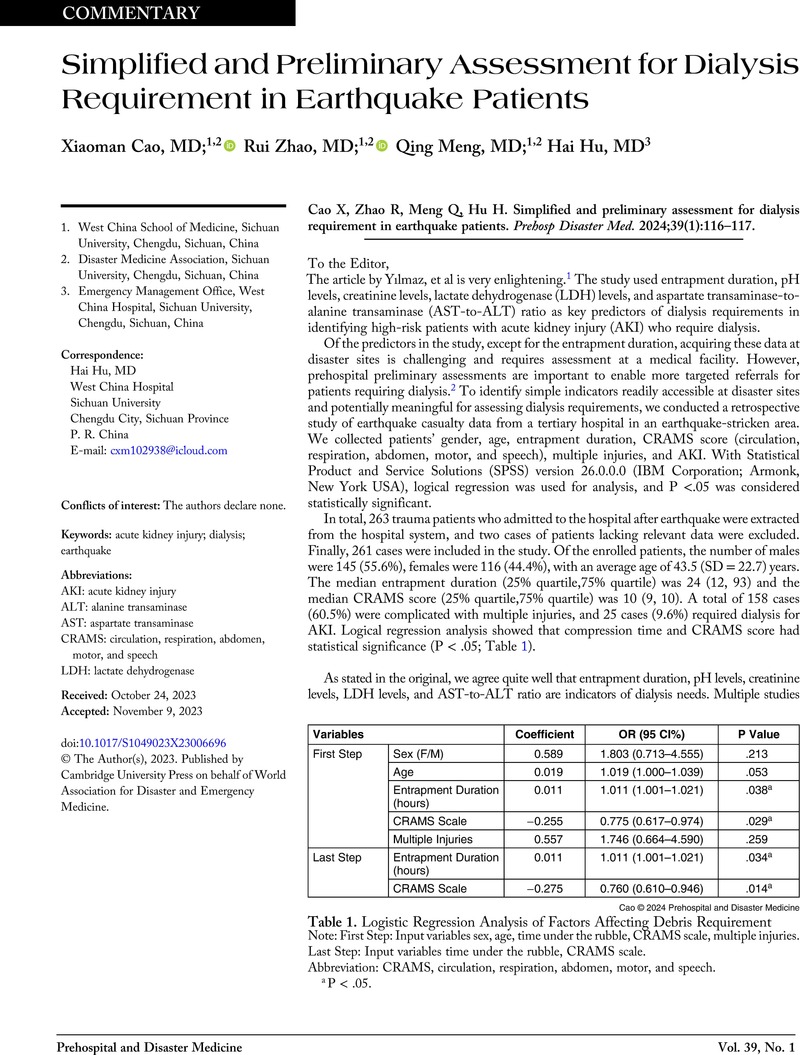No CrossRef data available.
Article contents
Simplified and Preliminary Assessment for Dialysis Requirement in Earthquake Patients
Published online by Cambridge University Press: 18 December 2023
Abstract
An abstract is not available for this content so a preview has been provided. Please use the Get access link above for information on how to access this content.

- Type
- Article Commentary
- Information
- Copyright
- © The Author(s), 2023. Published by Cambridge University Press on behalf of World Association for Disaster and Emergency Medicine
References
Yılmaz, S, Cetinkaya, R, Ozel, M, Tatliparmak, AC, Ak, R. Enhancing triage and management in earthquake-related injuries: the SAFE-QUAKE scoring system for predicting dialysis requirements. Prehosp Disaster Med. 2023;38(6):716–724.CrossRefGoogle ScholarPubMed
van Rein, EAJ, Houwert, RM, Gunning, AC, Lichtveld, RA, Leenen, LPH, van Heijl, M. Accuracy of prehospital triage protocols in selecting severely injured patients: a systematic review. J Trauma Acute Care Surg. 2017;83(2):328–339.CrossRefGoogle ScholarPubMed
Omrani, H, Najafi, I, Bahrami, K, Najafi, F, Safari, S. Acute kidney injury following traumatic rhabdomyolysis in Kermanshah earthquake victims: a cross-sectional study. Am J Emerg Med. 2021;40:127–132.CrossRefGoogle ScholarPubMed
Heidari Beigvand, H, Heidari, K, Hashemi, B, Saberinia, A. The value of lactate dehydrogenase in predicting rhabdomyolysis-induced acute renal failure: a narrative review. Arch Acad Emerg Med. 2021;9(1):e24.Google ScholarPubMed
He, Y, Hu, H, Jiang, Y, et al. [Comparison of the performance of three prehospital trauma scores in evaluation of injury severity among Lushan earthquake victims]. Zhonghua Wei Zhong Bing Ji Jiu Yi Xue. 2014;26(8):581–584.Google ScholarPubMed



